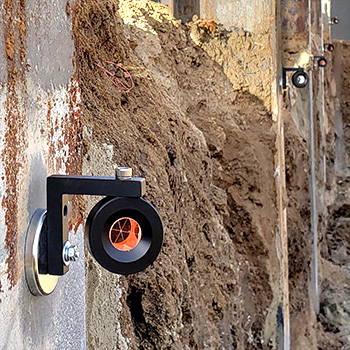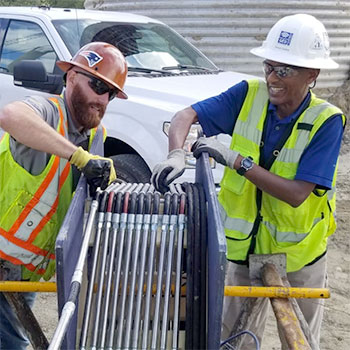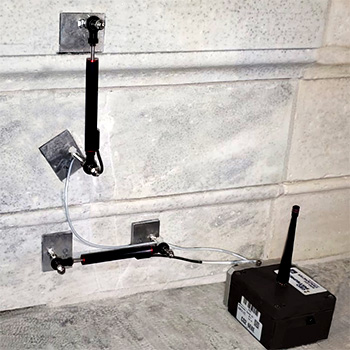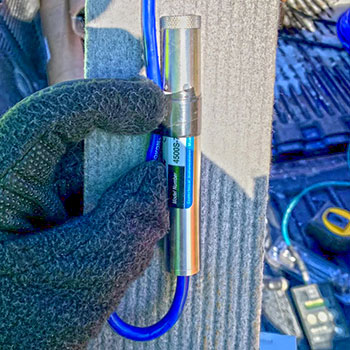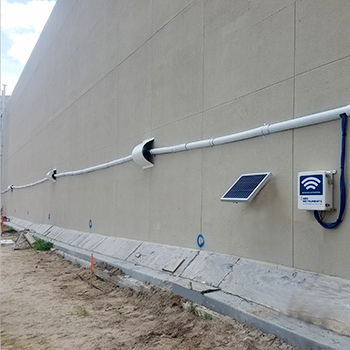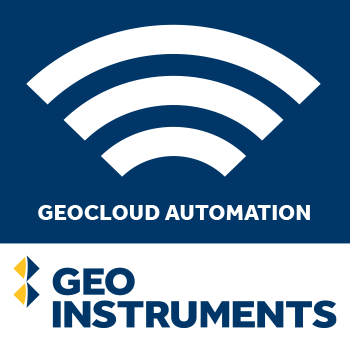GEO-Instruments monitors support of excavation systems to validate design decisions, provide early warning of developing problems, and verify corrective actions. Datasheet
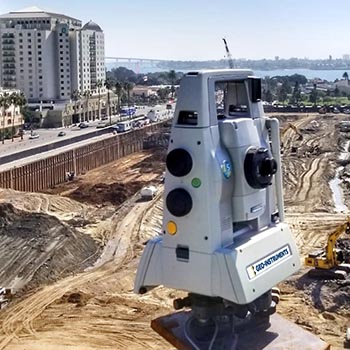
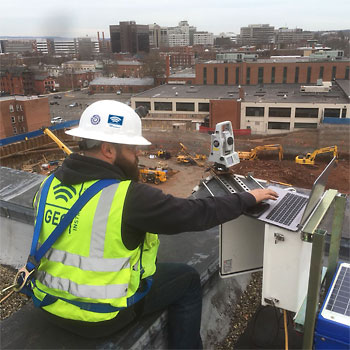
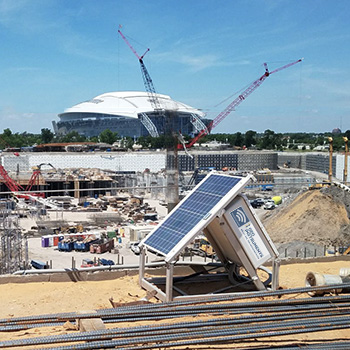
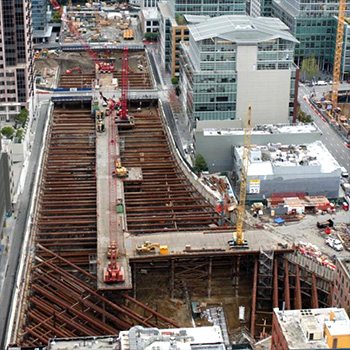
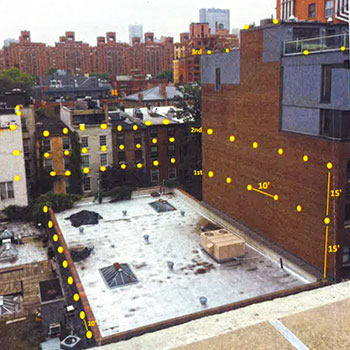
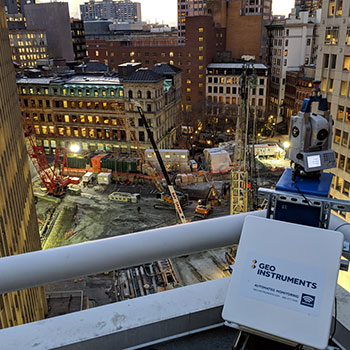
Support of Excavation Systems
Support of excavation (SOE) systems are designed to provide lateral support for the soil around the excavation, maintain a safe work area, and minimize impact to adjacent structures.
The performance of SOE systems is affected by complex interactions of soil type, lateral loads from adjacent structures, porewater pressure, and the width and depth of the excavation. Other variables that may affect performance include weather conditions, repositioning of heavy equipment and stockpiled materials, and vibrations from road traffic, railways, and nearby construction.
SOE Performance Parameters
Instrumentation provides measurements that can validate design decisions, detect unwanted trends, and verify corrective measures. Monitored parameters include:
- Deflection or deformation of the retaining structure
- Displacement of soil behind the retaining structure
- Displacement of adjacent structures and utilities
- Loads on anchors and bracing
- Pore-water pressures and water levels
- Vibration levels
Monitoring Support of Excavation
AMTS monitor lateral movement of shoring walls. Prisms can be clamped magnetically to soldier piles and sheet piles. Prisms can also be installed on soil-nail walls.
Tiltmeters placed on soldier piles and sheet piles can monitor deflection.
Shape Arrays monitor lateral movement in or behind earth retention structures.
Piezometers installed around the perimeter of the excavation monitor changes in pore-water pressure due to dewatering.
Strain gauges monitor changes in strain on struts and braces.
Load cells monitor changes in loads on tieback anchors.
Weather stations monitor rainfall and temperatures.
Monitoring Adjacent Structures
AMTS monitor any movement of buildings adjacent to the excavation. Prisms are installed on building facades.
Tiltmeters placed on walls and structural elements monitor rotation (leaning or tilting).
Crackmeters monitor existing cracks that may worsen if settlement occurs.
Hydrostatic Level Cells monitor settlements across a wide area. HLCs are especially effective for masonry structures.
Vibration Monitors monitor for excessive vibrations from the excavation activities.
Also see Pre-Construction Surveys
GeoCloud Automation operates 24/7 to deliver measurements from the project work site to secure project web sites. GeoCloud automation features wireless data acquisition, web-based data management, and website access to alerts, graphs, and reports.

